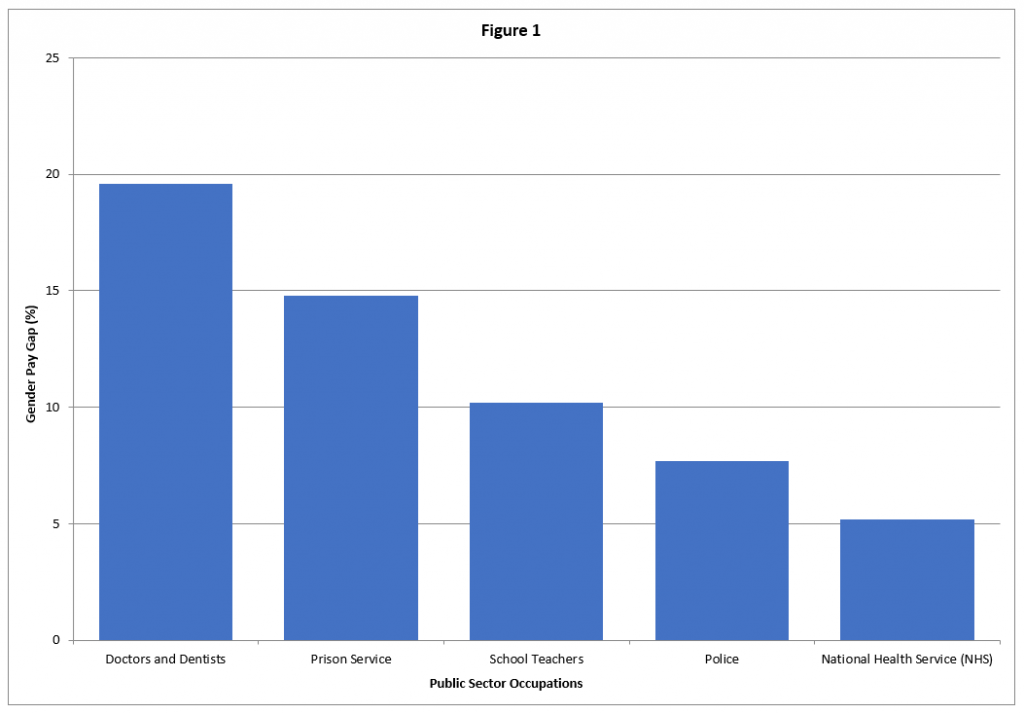Five things we learned about the Gender Pay Gap in the UK Public Sector
27 November 2019
In our latest post, Professor Melanie Jones and Dr Ezgi Kaya share some findings from their project for the Office of Manpower Economics (OME) which examined the gender pay gap in the UK public sector.
1. Inequality is similar across the public and private sectors.
Despite the gender pay gap remaining slightly narrower in the public sector than the private sector in 2018, our preferred measure of gender pay inequality, namely that part of the gender pay gap we cannot account for using the information available on workers and their jobs in a nationally representative survey, is actually similar across the public and private sector.
This is a reversal of an established pattern, including our previous work based on data until 2015 and suggests the public sector no longer represents a ‘beacon of good practice’ in gender pay inequality.
2. There’s a ‘glass ceiling’ for women.
Attention on the gender pay gap tends to focus on the average worker, but our analysis explores the entire pay distribution. So, we also consider gender pay gaps among both low and high pay workers.
Perhaps surprisingly, it’s within the public sector that we find gender pay inequality is particularly pronounced among high pay workers consistent with the presence of a ‘glass ceiling’ where women are less likely to access the highest paying roles.
3. Doctors, teachers, police and prison officers, and workers in the NHS are all affected.
Separating the public sector into two parts according to occupations where pay is and is not informed by the recommendations of Pay Review Bodies (PRBs), we find similar levels of gender pay inequality on average.
However, there’s a much more pronounced ‘glass ceiling’ in PRB occupations, which include doctors, teachers, police and prison officers, and workers in the NHS.
4. There’s substantial variation between public sector occupations.
Substantial variation is evident across the five separate PRBs considered (see Figure 1). We find the gender pay gap among doctors and dentists (20%) is, for example, about four times that of workers in the NHS (5%).

5. Women are less likely to receive performance-related pay.
Despite the limited prevalence of performance-related pay in the UK public sector, which would include profit sharing, bonuses, piecework and commission payments, we find women are less likely to receive performance-related pay than men, and that this gap is larger than in the private sector.
More positively, conditional on receiving performance-related pay, and unlike in the private sector, we find no evidence of gender pay inequality in the amount of performance-related pay workers receive in the public sector.
Implications for policy and practice
Our analysis will inform the Pay Review Bodies which make pay recommendations across the public sector and workforces critical in providing key public services in the UK. Working with the OME means our analysis has the potential to impact on the pay of 2.5 million workers or around 45% of public sector staff, and that’s a really exciting prospect.
Future Research
We’re keen to build on this project and further explore the determinants of the UK gender pay gap. And, we’re currently examining whether the introduction of Gender Pay Gap Reporting in the UK has had a narrowing impact on the gender pay gap.
We’ve recently welcomed Suzanna Nesom to our research team as an ESRC collaborative PhD student working with Chwarae Teg. They provide advice on policy affecting gender equality and the contribution of women to the economy. Her PhD aims to understand why the gender pay gap varies so much across local authorities in Wales. So, watch this space.
Melanie Jones is a Professor of Economics at Cardiff Business School.
Dr Ezgi Kaya is a Lecturer in Economics at Cardiff Business School.
Read the full report ‘Understanding the Gender Pay Gap within the UK Public Sector’.
Comments
- March 2024
- April 2023
- August 2022
- July 2022
- April 2022
- March 2022
- February 2022
- December 2021
- October 2021
- September 2021
- May 2021
- April 2021
- March 2021
- February 2021
- January 2021
- December 2020
- November 2020
- October 2020
- September 2020
- August 2020
- July 2020
- June 2020
- May 2020
- April 2020
- March 2020
- February 2020
- January 2020
- November 2019
- October 2019
- September 2019
- August 2019
- July 2019
- June 2019
- May 2019
- April 2019
- March 2019
- February 2019
- January 2019
- December 2018
- November 2018
- October 2018
- September 2018
1 comment
Comments are closed.